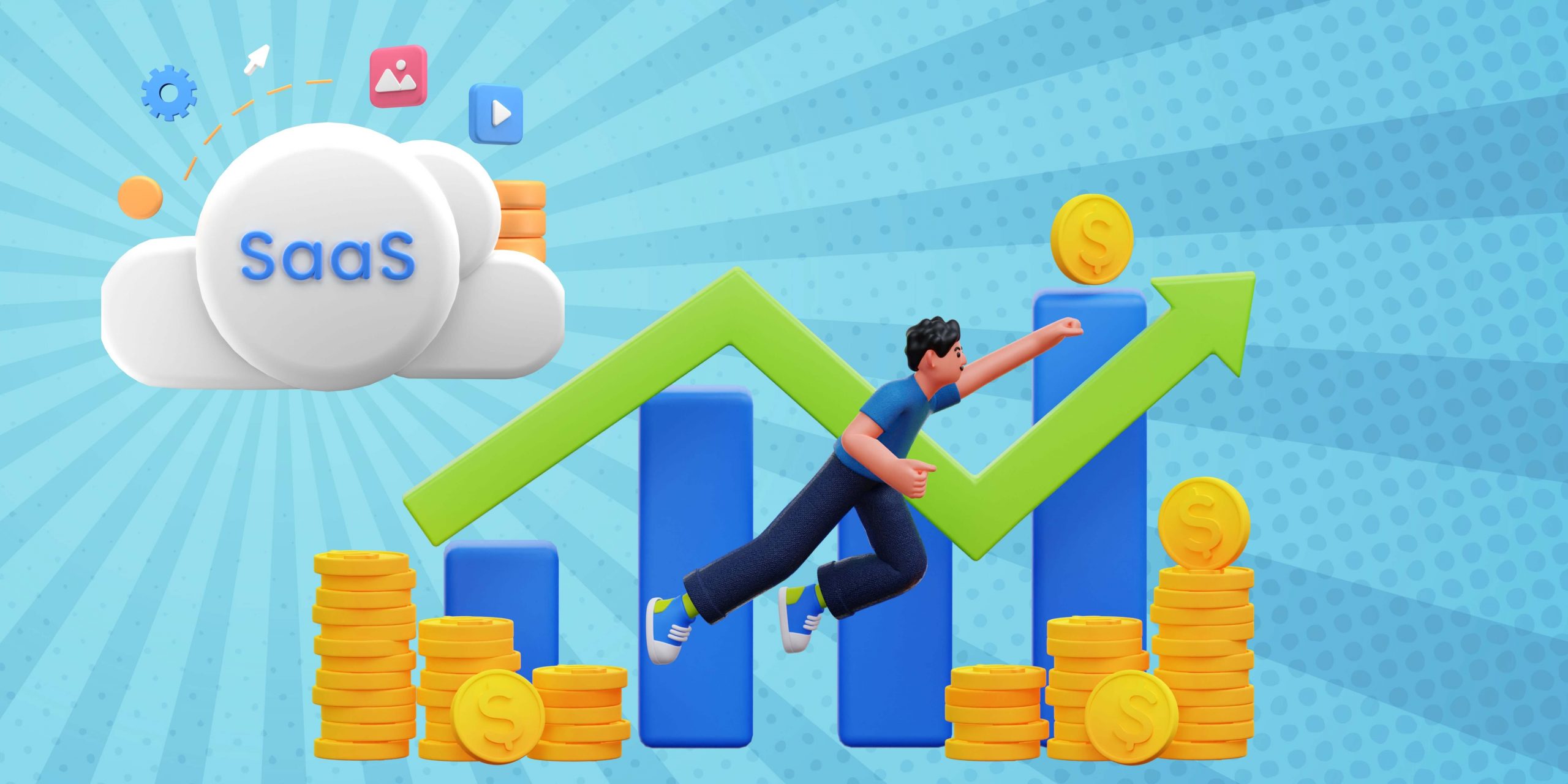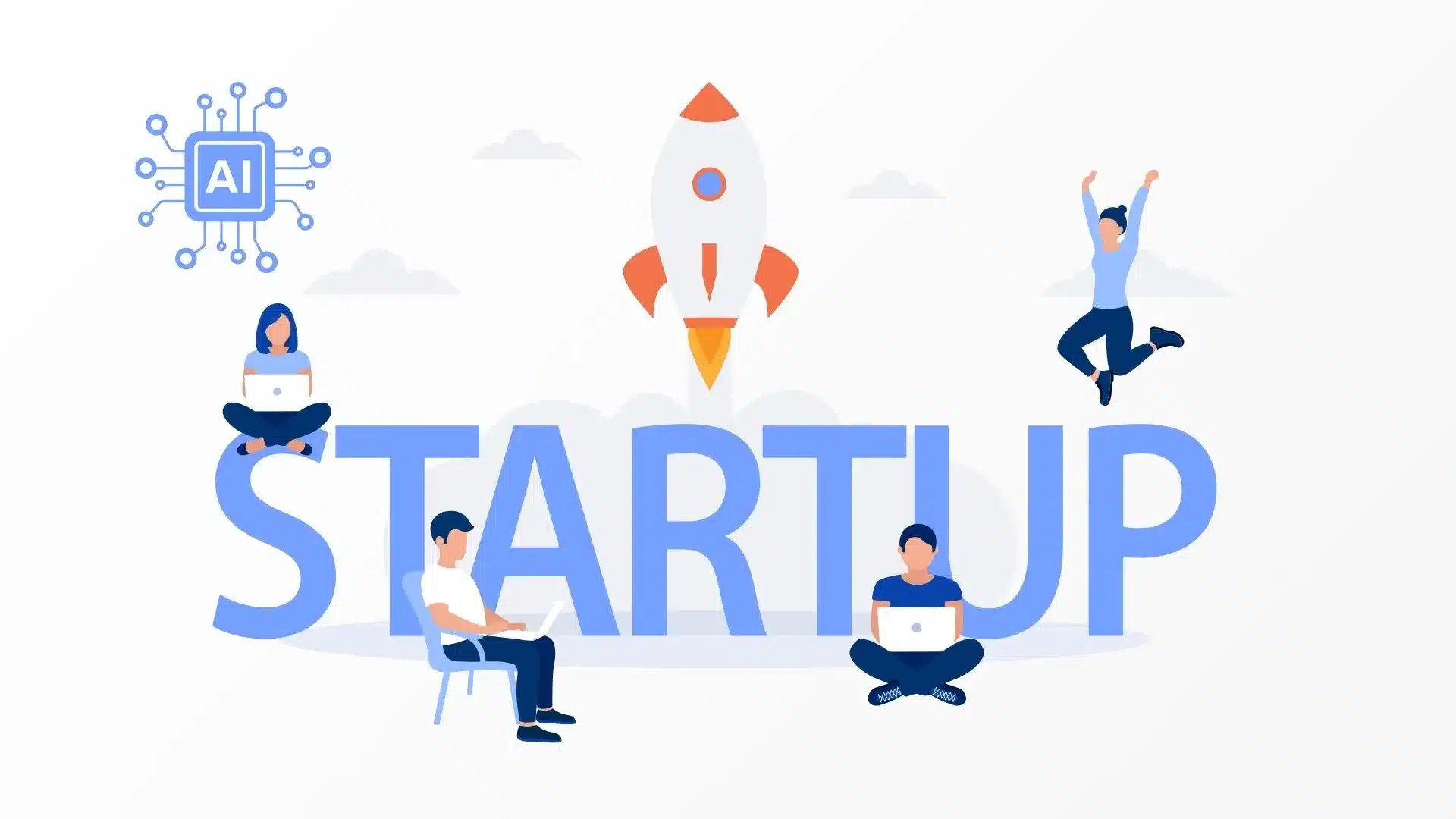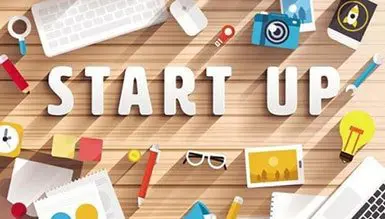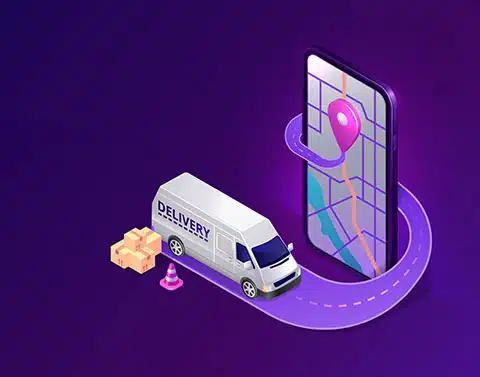Software-as-a-Service (SaaS) has been one of the most prominent business models in the last decade because it has grown rapidly with the rise of cloud computing and the internet. It is a model where software is hosted on a central server, accessed through the internet, and offered to customers as a service rather than being sold as a product. Furthermore, this model offers several benefits to businesses, including lower costs, reduced IT maintenance, and easier access to software. With the rapid growth of the SaaS market, businessmen are looking to convert their ideas into successful SaaS businesses.
In this blog, we will explore how to convert a SaaS business idea into a successful business in 2023, covering everything from SaaS product ideas generation to launch and beyond.
Statistics and Information
The SaaS market is expected to grow to over $600 billion by 2023, according to a recent report by Gartner.
Furthermore, the growth of SaaS businesses has been driven by several factors, including the growth of cloud computing, increasing demand for software-as-a-service, and the rise of mobile and internet technologies.
In addition, the COVID-19 pandemic has accelerated the trend toward digital transformation, with many businesses looking to move their operations online and adopt SaaS solutions.
What is a SaaS company?

Mostly, SaaS company (Software as a Service company) refers to a software delivery model in which a software application is hosted by a third-party vendor and made available to customers over the internet.
Customers can access the software through a web browser or API (Application Programming Interface) without having to install and run the application on their own computers or servers.
SaaS company typically offer their software as a subscription service, with customers paying a monthly or annual fee for access to the software.
The vendor is responsible for maintaining and updating the software, ensuring its availability and security, and providing technical support to customers.
SaaS has become a popular delivery model for many types of software, including customer relationship management (CRM), enterprise resource planning (ERP), human resources management (HRM), and project management software.
The benefits of SaaS for customers include lower upfront costs, reduced IT overhead, and easy access to the latest software features and updates.
For vendors, the SaaS model allows for a recurring revenue stream, greater scalability, and the ability to reach a large and diverse customer base through the internet.
Overall, SaaS is transforming the way that software is purchased, delivered, and used, making it easier and more cost-effective for businesses of all sizes to access and use the software they need to run their operations and grow their businesses.
Why Is SaaS So Great as a Start-Up Idea?
Software as a Service (SaaS) is considered a great start-up idea for several reasons:
- Large Market: The demand for cloud-based software solutions has been growing rapidly, providing a large market for SaaS start-ups to tap into.
- Scalability: SaaS solutions can be delivered over the internet and can be accessed from anywhere, making it easy to scale the business to serve a growing customer base.
- Lower Costs: Since SaaS solutions are hosted in the cloud, there are lower upfront costs for infrastructure and hardware. This allows start-ups to focus their resources on product development and marketing.
- Subscription-based revenue model: SaaS companies typically use a subscription-based revenue model, which provides a steady stream of recurring revenue and helps to predict future cash flows.
- Easy to Monetize: With SaaS, it is easy to monetize a product and generate revenue as soon as it is released.
- High Margins: SaaS companies often enjoy high margins due to the recurring revenue model and lower costs of delivery.
- Data-Driven Insights: SaaS solutions often generate a large amount of data, which can be analyzed to gain valuable insights into customer behavior and preferences. This information can be used to inform product development and marketing strategies.
- Ease of Updating: SaaS solutions can be updated quickly and easily, allowing companies to respond quickly to changing market conditions and customer needs.
Overall, SaaS provides a flexible, scalable, and cost-effective way for start-ups to deliver software solutions to customers and generate revenue.
Different Types of SaaS:
There are several types of SaaS, including:
Customer Relationship Management (CRM) SaaS:
CRM SaaS provides businesses with a centralized platform for managing customer relationships and interactions. This type of SaaS is typically used by sales, marketing, and customer service teams to manage customer data, interactions, and communications.
Human Resource Management (HRM) SaaS:
HRM SaaS provides businesses with a centralized platform for managing human resource-related activities, such as hiring, payroll, and benefits administration.
Project Management SaaS:
It provides businesses with tools for organizing and tracking project tasks, deadlines, and progress. Project managers and teams commonly use this type of SaaS to improve collaboration and ensure project success.
Accounting SaaS:
It provides businesses with tools for managing financial transactions, such as invoicing, payments, and expense tracking. Small and medium-sized businesses commonly use this type of SaaS to streamline financial operations and reduce accounting costs.
Marketing Automation SaaS:
It provides businesses with tools for automating marketing activities, such as email marketing, social media marketing, and lead nurturing. Marketing teams commonly use this type of SaaS to increase efficiency and improve the effectiveness of their marketing campaigns.
Collaboration and Communication SaaS:
Collaboration and communication SaaS provides businesses with tools for improving internal and external communication, such as email, instant messaging, and video conferencing. Furthermore, This type of SaaS is commonly used by teams to improve collaboration and communication both within the organization and with customers and partners.
E-Commerce SaaS:
E-commerce SaaS provides businesses with tools for creating and managing online stores, including product catalogs, shopping carts, and payment processing. Moreover, this type of SaaS is commonly used by small and medium-sized businesses to sell products and services online.
Supply Chain Management (SCM) SaaS:
SCM SaaS provides businesses with tools for managing the flow of goods, information, and financial transactions within the supply chain. This type of SaaS is commonly used by organizations to improve supply chain efficiency and reduce costs.
Healthcare:
A type of SaaS that helps healthcare organizations manage patient information, medical records, and billing. Examples include Cerner and Epic Systems.
These are some of the primary uses of SaaS, but there are many others as well. The key advantage of SaaS is that it allows organizations to access software without having to manage the underlying infrastructure, making it more scalable, cost-effective, and flexible.
Discover the most effective strategies for growing your SaaS business with our expert consultants.
How To Come Up With Ideas for Great SaaS Products?
Generating great SaaS ideas for small businesses requires a combination of market research, identifying pain points, and creativity. Here is a detailed process to help you produce SaaS ideas for your own product:
1. Identify a problem or pain point:
The first step is to identify a problem or pain point that people face in their daily lives or work. This could be anything from a lack of productivity to difficulty in managing tasks. You can conduct surveys, focus groups, or simply observe people to identify these pain points.
2. Research the market:
Once you have identified a problem, research the market to see if there are any existing solutions. Look at the competitors and see what they offer, what features they lack, and what the market demands.
3. Identify untapped opportunities:
If there are existing solutions, see if there are any untapped opportunities that you could exploit. This could be a feature that no one has thought of yet or a new way of delivering the solution.
4. Validate your idea:
Before investing time and resources into developing your SaaS product, validate your idea by speaking to potential customers, conducting surveys, and creating prototypes to see how they respond.
5. Focus on solving a specific problem:
Make sure that your SaaS idea solves a specific problem and provides value to its users. Avoid creating a solution that tries to solve too many problems or cater to too many users, as this can lead to a cluttered product that does not excel in any specific area.
6. Make it user-friendly:
Ensure that your SaaS idea product is user-friendly and easy to use. People should be able to understand its features and functions within a few minutes of using it.
7. Keep it simple:
Try to keep your SaaS product simple and focused rather than trying to include too many features. People are more likely to adopt a product that is simple, straightforward, and easy to use.
Also Read: The Agile Approach: Five Benefits for Product Development
How to build a successful SaaS business as a first-time founder in a few simple steps
Building a successful SaaS business as a first-time founder requires a mix of creativity, resourcefulness, and the ability to navigate a complex and rapidly evolving landscape. Here are some unique steps that can help set you on the right path:
1. Define your mission and values:
Before you start building your product, take the time to define your company’s mission and values. This will help guide your decisions and ensure that you stay focused on what matters most.
2. Build a network of advisors:
Seek mentors and advisors who have experience in your industry. They can provide valuable guidance and feedback as you navigate the challenges of building a new business.
3. Create a culture of experimentation:
Embrace a culture of experimentation and encourage your team to take risks and try new things. This will help you stay nimble and adaptable in a rapidly changing market.
4. Leverage emerging technologies:
Stay up to date with the latest emerging technologies and trends in your industry. This can help you stay ahead of the competition and deliver innovative solutions that meet the evolving needs of your customers.
5. Focus on user experience:
Prioritize user experience at every stage of the development process. This means designing a product that is intuitive, easy to use and meets the needs of your target market.
6. Develop a community of users:
Build a community of users who are passionate about your product and brand. This can help you create a sense of loyalty and increase customer retention over time.
7. Secure strategic partnerships:
Identify strategic partnerships that can help you expand your reach and gain access to new markets. This may involve partnering with other companies in your industry or forming alliances with complementary products and services.
8. Emphasize sustainable growth:
Focus on sustainable growth rather than rapid expansion at all costs. This means taking a long-term view and building a business that can thrive over time.
9. Foster a culture of inclusivity and diversity:
Create a culture of inclusivity and diversity that values the contributions of all team members. This can help you attract and retain top talent while creating a more innovative and creative work environment.
These unique steps can help you build a successful SaaS business that stands out in a crowded market. By focusing on your mission, staying adaptable, and prioritizing user experience, you can build a business that meets the needs of your customers and delivers long-term success.
From product ideation to launch, we’ll help you create a SaaS product that stands out in the market.
What is the list of 10 micro-SaaS ideas for 2023?
By keeping an eye on emerging technologies, you can identify a market niche where you have an advantage over the competition and use that to your advantage. The current buzz in the digital world is about AI (Artificial Intelligence), ML (Machine Learning), blockchain, and the transition to Web 3.0.
Below is the list of 10 Saas product ideas that you can implement in 2023.
1. Virtual event platform:
A virtual event platform allows organizations to host virtual conferences, trade shows, and other events. This could include features such as live streaming, virtual booth creation, and virtual networking opportunities.
2. Artificial Intelligence (AI) and Machine Learning (ML):
AI and ML are growing in demand as more businesses seek to automate processes and gain insights from substantial amounts of data. Micro-SaaS companies in this space could offer AI-powered chatbots for customer service, predictive analytics for business operations, or personalized product recommendations for e-commerce sites.
3. Low and No-Code Apps:
The demand for low and no-code apps is growing as businesses seek to quickly launch new digital products and processes without the need for extensive coding expertise. Moreover, Micro-SaaS companies in this space could offer platforms for building custom apps, automating workflows, or designing landing pages without writing code.
4. Vertical Micro-SaaS Elements:
Vertical Micro-SaaS companies specialize in serving specific industries, such as real estate, healthcare, or finance. Moreover, these companies could offer specialized tools for these industries, such as a real estate CRM for agents, a patient management system for healthcare providers, or a financial planning tool for advisors.
5. Blockchain and Decentralized Databases:
Blockchain technology and decentralized databases are growing in popularity as businesses seek to increase security and transparency in their operations. In addition, Micro-SaaS companies in this space could offer blockchain-powered supply chain management, secure data storage solutions, or decentralized identity verification.
6. NFTs (Non-Fungible Tokens):
Non-fungible tokens (NFTs) are growing in popularity to verify ownership and authenticity of digital assets, such as art, collectibles, and music. Moreover, Micro-SaaS companies in this space could offer platforms for buying, selling, and trading NFTs or tools for creating and managing NFT-powered digital experiences.
7. Sales and Marketing:
If you are looking to engage your target audiences then sales and marketing tools are crucial for businesses looking to. Micro-SaaS companies in this space could offer solutions for lead generation, email marketing, or customer relationship management.
8. Training and Learning Platforms:
The demand for online training and learning platforms is growing accordingly, as businesses seek to upskill their employees and customers. Micro-SaaS companies in this space could offer courses, tutorials, or certification programs for various industries and skills.
9. Micro-SaaS for Freelance and Self-Employed Workers:
The gig economy is growing, and more people are working as freelancers or starting their own businesses. Furthermore, Micro-SaaS companies in this space could offer tools for invoicing, project management, or accounting for these types of workers.
10. Virtual Interior Design Software:
The demand for virtual interior design is growing and people are seeking to visualize and plan home renovation projects before committing to them. Micro-SaaS companies in this space could offer virtual design tools, 3D rendering services, or product recommendations for home decor.
Online Appointment Scheduling Tool – Online appointment scheduling is growing in demand as businesses seek to streamline their scheduling processes and improve customer convenience. Moreover, Micro-SaaS companies in this space could offer online scheduling systems for several types of businesses, such as salons, medical practices, or service providers.
These are just a few examples of the many micro-SaaS ideas that have emerged in recent years.
Also Read: 20+ Most Profitable Micro SaaS Business Idea For Your Next Startup
Wrapping Up
SaaS is a wonderful opportunity for small businesses to start a new business in 2023. The 10 micro-SaaS ideas for 2023 represent a range of opportunities for businesses looking to enter the software-as-a-service market.
From AI and machine learning to blockchain and decentralized databases to virtual interior design software, these ideas reflect the growing demand for digital solutions across a range of industries and segments. Moreover, by focusing on niche markets and specific problems, micro-SaaS companies can offer tailored solutions that can compete with larger, more established players.
Furthermore, the demand for SaaS solutions is likely to grow as the business world continues to evolve and digital transformation accelerates. Micro-SaaS companies have the potential to disrupt traditional markets, create new ones, and offer innovative solutions to businesses and consumers alike.
Get The Help and Assets You Need
Altogether, converting a SaaS idea into a successful business in 2023 requires careful planning, a strong understanding of the market, and a focus on creating a user-friendly and scalable product. JumpGrowth is a custom software development service that can help you turn your SaaS vision into a reality. With its experienced team of developers, designers, and project managers, JumpGrowth can help you develop, launch, and grow your SaaS business in a cost-effective and efficient manner. So, if you are looking to convert your SaaS idea into a thriving business then you must consider working with JumpGrowth to bring your vision to life.
Contact our team today for expert SaaS development and consulting services


























